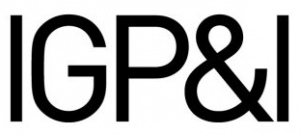Published 05 October 2000
Circular No. 7/2000 October 2000
TO THE MEMBERS OF ASSURANCEFORENINGEN GARD - gjensidig-
RECOMMENDATIONS ON CARRIAGE OF CALCIUM HYPOCHLORITE
We refer to our Circular No 16/99 and to the Working Group's previous Recommendations on Carriage of Calcium Hypochlorite UN Nos. 1479, 1748, 2208, 2880 and to The International Maritime Organisation's (IMO) Marine Safety Circular No. 963 dated 1 June 2000.
After several large fires in cargo ships in the 1990s involving Calcium Hypochlorite, The International Group of P&I Clubs Commissioned full-scale tests on the package sizes of this cargo, which are routinely shipped. The results were such that experts advising the International Group viewed the prevailing transport requirements for this product group as inadequate and recommended that they be amended.
The International Group therefore delivered a submission to the February 2000 meeting of the IMO Sub-committee on Dangerous Goods, Solid Cargoes and Containers (DSC5), recommending amendments to the IMDG Code transport requirements for calcium hypochlorite. The changes recommended to the IMO were based on the scientific results reflected in the Group circular referred to above. After much debate in plenary session at DSC5 the Sub-committee decided to recommend the Maritime Safety Committee to partially amend the rules in the updated version of the IMDG Code (Amendment 30) coming into force 1 January 2001. However, the amendments will not introduce any changes to package sizes for this product. Nor will the amendments to it expressly require stowage of the cargo "Clear of Living Quarters". The Marine Safety Committee (MSC 72) adopted the recommendations of DSC5 and the entries for calcium hypochlorite (UN Nos. 1748, 2208 and 2880) will be amended in the new version of the code. In addition an MSC Circular (as attached) was issued urging all parties to implement the amended requirements as soon as possible.
The International Group supports the actions undertaken by the IMO and agrees with the amendments introduced in the new IMDG Code. However, the failure to introduce package size limitation and the failure to require stowage "Clear of Living Quarters" contradicts scientific advice received from the experts advising the International Group. All of the full-scale tests performed by the International Group on calcium hypochlorite "UN No. 2880" indicates that larger packages can develop a critical condition at temperatures which can be encountered in cargo holds of modern container vessels. Furthermore, if calcium hypochlorite develops a critical condition (for any reason) it will emit chlorine gas, which is toxic and the runaway reaction will develop extreme heat that will ignite surrounding cargoes, which demonstrates the need to consider the proximity to living quarters in stowage of such cargoes.
Consequently, it is the recommendation of the International Group that Members involved in shipments of calcium hypochlorite products should, in addition to the new requirements of the IMGD Code, ensure that cargo transport units are stowed "Clear of Living Quarters" and that the size of the individual packages stowed in the cargo transport unit should not exceed 45 kg net weight per package.
We have learned that shipments of calcium hypochlorite have been loaded on board vessels under different names, which has lead to some of the shipments not being declared as dangerous cargo. Below is a list of synonyms for products that are calcium hypochlorites or products related to calcium hypochlorite. Depending on the exact chemical composition of the product it may or may not become unstable at temperatures encountered in the ship's hold.
B-K POWDERBLEACHING POWDERBLEACHING POWDER, containing 39% or less chlorineCALCIUM CHLOROHYDROCHLORITECALCIUM HYPOCHLORIDECALCIUM HYPOCHLORITECALCIUM OXYCHLORIDECAPORITCCHCHLORIDE of LIMECHLORINATED LIMEHTHHY-CHLORLIME CHLORIDE
Yours faithfully, GARD SERVICES AS As agent only for Assuranceforeningen Gard - gjensidig
John G. Bernander Chief Executive Officer


